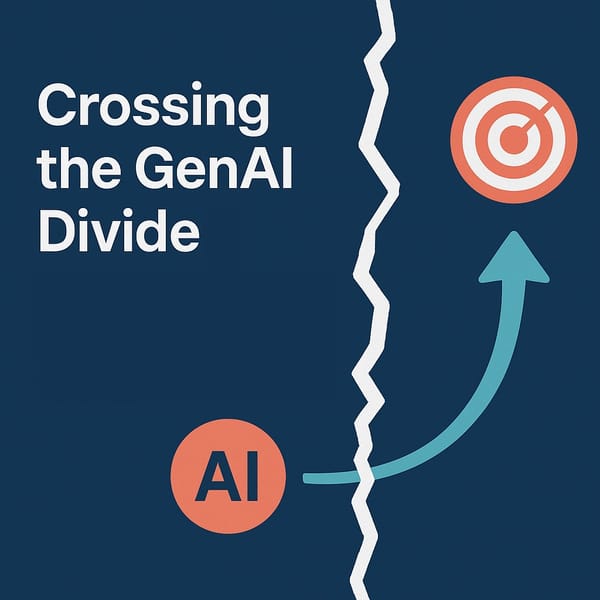How AI Helps Market Intelligence Firms Win More Business

Solving the business development bottleneck with speed, context, and consistency
This is the second post in our five-part series on how AI is transforming key workflows in market intelligence firms. If you missed the first post on the big picture, you can read it here.
The Proposal Is Due in 48 Hours
The client wants a tailored response. They’re asking for relevant examples, a clear point of view on market dynamics, and a compelling value proposition. You know your team has done similar work, but the content is buried in folders, decks, Teams messages, and people’s memories.
You check the CRM. It gives you contact history and deal stages, but not the proposal that actually won the last engagement. You ask a colleague if they remember which case study you used last quarter. They’re in meetings all day.
This is how business development still works in many market intelligence firms. The knowledge exists, but it’s scattered, siloed, and hard to reuse—especially under pressure.
Why Business Development Still Feels Manual
Most business development teams have tools in place: a CRM, branded templates, and shared folders. But these tools weren’t designed for how market intelligence firms actually win work—especially in today’s environment.
Here’s where the process often breaks down:
Time is lost on work that already exists
Custom proposals can take few days to assemble, even when much of the content already exists elsewhere.
Knowledge is fragmented
Insights from past wins are spread across documents, emails, and individual memory. There’s no unified way to search across all of it.
Messaging lacks consistency
Without shared language and positioning, proposals vary widely across teams, clients, and service lines.
Personalization doesn’t scale
Clients expect tailored outreach, but creating it manually is hard to sustain—especially with lean teams.
Context is missing when it matters
Proposals often go out without the benefit of real-time market shifts, competitor moves, or client-specific signals.
Expectations have changed
With the rise of tools like ChatGPT, clients expect fast, relevant, and well-informed responses.
How AI Helps Business Development Teams Move Faster and Smarter
AI is not a replacement for the business development process. It is a multiplier. It turns the knowledge your firm already has into something accessible and usable—instantly and at scale.
Here’s where it creates real impact:
Draft better proposals, faster
AI can surface relevant content from previous proposals, slide decks, and research deliverables to help build high-quality drafts in minutes.
Reuse what has worked before
Instead of reinventing the wheel, teams can retrieve and repurpose winning case studies, messaging, and differentiators aligned to their offerings.
Personalize at scale
AI can generate tailored outreach emails, pitch decks, and one-pagers by client type, sector, or region—without starting from scratch each time.
Bring in live context
Business development teams can incorporate up-to-date market intelligence and competitor signals into their responses, automatically.
Build institutional memory
Every proposal, every win, and every insight becomes part of a searchable, shareable knowledge base—not just something stored in someone’s inbox.
Where Human Judgment Still Matters
AI does not replace the strategic thinking, creativity, or client relationships that drive successful business development. It won’t choose your win themes or write your value proposition. But it can give your team a running start and reduce the time spent on repetitive, manual tasks—so you can focus on the work that actually moves the deal forward.
How Agami Helps Market Intelligence Firms Win More, With Less Effort
Agami helps market intelligence firms automate and accelerate business development with private AI agents that work securely inside your existing infrastructure and workflows.
With Agami, your team can:
- Draft proposal responses in minutes using your own best content
- Find and reuse high-impact case studies and differentiators with one query
- Deliver personalized messaging at scale, even with small teams
- Pull in real-time insights as part of the pitch process
- Capture institutional knowledge so your best work is always within reach
Unlike generic AI tools, Agami runs entirely within your environment and connects directly to your internal systems—so your data stays private, compliant, and under your control.
Ready to Make Business Development Faster, Smarter, and More Consistent?
See how Agami helps market intelligence teams win more work—without adding more hours or headcount.
Book a demo →
Frequently Asked Questions
How can AI speed up business development in market intelligence firms?
AI helps business development teams draft proposals faster by surfacing relevant content from past work, enabling personalization at scale, and incorporating real-time market context—all without manual digging.
What are the benefits of using AI for proposal writing?
AI improves proposal writing by reducing time spent on repetitive tasks, reusing proven messaging and case studies, and generating tailored content for specific industries, clients, or regions.
Can AI help personalize outreach for B2B services?
Yes. AI can generate personalized outreach emails, one-pagers, and presentations by analyzing client data, sector trends, and previous engagement history, making B2B outreach more scalable and effective.
How does AI support institutional knowledge reuse?
AI enables firms to turn past proposals, insights, and deliverables into a searchable knowledge base. This helps teams find and reuse what worked before, reducing duplicated effort and improving consistency.
Is it safe to use AI with confidential business development data?
Yes, as long as the AI solution runs within your infrastructure and is designed with security and compliance in mind. Firms should avoid sending sensitive data to public LLMs and instead use private deployments.





